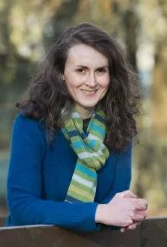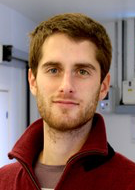Miguel Aguilera
Nonequilibrium Neural Computation: Stochastic thermodynamics of the asymmetric Sherrington-Kirkpatrick model
Effective neural information processing entails flexible architectures integrating multiple sensory streams that vary in time with internal and external events. Physically, neural computation is, in a thermodynamic sense, an out-of-equilibrium, non-stationary process that changes dynamically giving rise to entropy production. Cognitively, neural activity results in dynamic changes in sensory streams and internal states. In contrast, classical neuroscience theory focuses on stationary, equilibrium information paradigms (e.g., efficient coding theory), which often fail to describe the role of nonequilibrium fluctuations in neural processes. In consequence, there is a pressing demand for mathematical tools to understand the dynamics of large-scale, non-equilibrium networks systems and to analyse high-dimensional datasets recorded from them. Inspired by the success of the equilibrium Ising model in investigating disordered systems in the thermodynamic limit, we study the nonequilibrium thermodynamics of the asymmetric Sherrington-Kirkpatrick system with both synchronous and asynchronous updates as a prototypical model of large-scale nonequilibrium networks. We employ a path integral method to calculate a generating functional over the trajectories to derive exact solutions of the order parameters, conditional entropy of trajectories, and steady-state entropy production of infinitely large networks. Inspecting the system's phase diagram, we find that the entropy production peaks at a critical order-disorder phase transition, but it is more prominent outside the critical regime, especially at disordered phases with low entropy rates. While entropy production is becoming popular to characterize various complex systems, our results reveal that increased entropy production is linked with radically different scenarios. Combining multiple thermodynamic quantities yields a more precise picture of different temporally irreversible spiking patterns. These results contribute to an understanding of the distinct roles in neural computation in the light of an exact analytical theory of the thermodynamics of large-scale nonequilibrium systems and their phase transitions.

Henry Shevlin
Uncanny communicators: the coming age of Social AI Since the launch of ChatGPT in November last year, there has been growing public awareness that generative AI will soon have massive impacts on our professional lives. What is less widely recognised, however, is the pervasive influence that AI will soon have on our social and romantic lives. Or so I argue in this talk. Beginning with a survey of existing social, conversational, and romantic applications of generative AI, I argue that deep features of human cognition and 21st social arrangements make it highly likely that AI friendships and romantic partnerships will become commonplace in many societies around the world before the end of the decade. After considering and responding to some sceptical doubts about this suggestion, I go on to survey some of the ethical and political concerns - from social deskilling to commodification of relationships – raised by this new stage in the development of human-AI interactions, and argue that we should begin planning for these as soon as possible.






